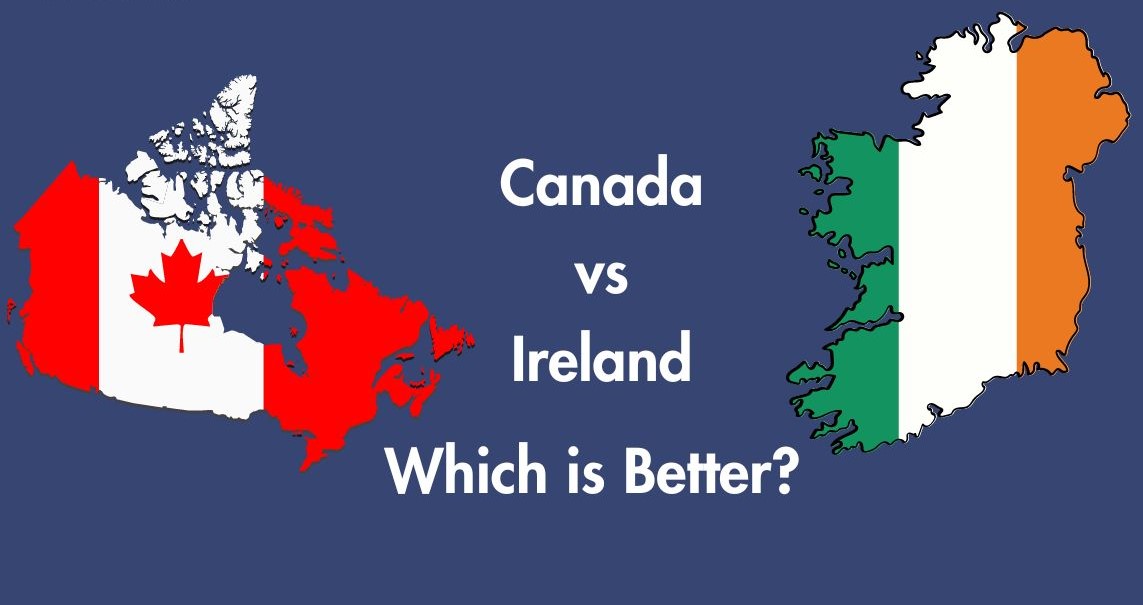How Changes in Canada’s Education Policies Affect International Students
Canada has long been a preferred destination for international students, thanks to its high-quality education, diverse culture, and welcoming immigration policies. However, recent shifts in Canada’s education policies are shaping the experience for international students in ways both beneficial and challenging. These changes are driven by factors such as labor market needs, housing shortages, and evolving immigration priorities. In this blog, we’ll explore the current changes in Canada’s education policies, how they impact international students, and what students can expect as they plan to study in Canada.
1. Overview of Canada’s Appeal for International Students
Canada’s education system has historically been very inclusive, with public universities offering globally recognized degrees and a strong emphasis on multiculturalism. International students flock to Canada not only for its education but also for the opportunities to gain work experience and eventually apply for permanent residency. The Post-Graduation Work Permit (PGWP) program, relatively affordable tuition fees compared to the U.S. and U.K., and high quality of life make Canada a top choice for students globally.
However, Canada is currently facing unique challenges. Rapidly growing international student numbers are contributing to pressure on housing, employment, and other resources, leading policymakers to reconsider certain aspects of the system.
2. Recent Changes in Canada’s Education Policies and Their Impact
a. Stricter Study Permit Requirements
One of the most immediate changes for international students is the tightening of requirements for obtaining a study permit. Canada’s immigration authorities are placing increased scrutiny on applications to ensure that students are genuinely interested in studying and not just seeking a pathway to employment or residency.
Impact on Students:
For international students, this means that a strong application, which clearly highlights academic intentions and career goals, is more critical than ever. Supporting documents like bank statements, academic records, and intent letters are being closely reviewed. Applicants may face delays or even rejections if they cannot demonstrate that their primary purpose is education, which requires thorough preparation and transparency.
b. Capping International Student Enrollment
In response to housing shortages and resource allocation concerns, the Canadian government has started discussions around capping international student enrollments at specific institutions. Some provinces and institutions are now evaluating how they manage the number of students they admit, especially in areas facing acute housing shortages.
Impact on Students:
This change could limit admissions at popular universities and institutions, making the application process more competitive. Students may need to apply to a broader range of institutions or consider studying in provinces with fewer restrictions. Additionally, securing housing early will be essential, as demand for accommodation is particularly high in urban centers.
c. Enhanced Focus on Skilled Immigration and Employment
Canada’s new policies are aligning education more closely with labor market needs, emphasizing programs that develop skills in high-demand fields like healthcare, technology, and engineering. The government is making it easier for students in these fields to transition into the workforce post-graduation and apply for permanent residency.
Impact on Students:
International students studying in high-demand sectors will likely find it easier to secure work permits and even permanent residency. This is an opportunity for students to focus on skill-building in these areas. However, students in less prioritized fields might face greater competition and more restrictive work permit opportunities post-graduation.
d. Changes to the Post-Graduation Work Permit (PGWP) Eligibility
The PGWP has been one of the most attractive policies for international students, as it allows graduates to work in Canada for up to three years, depending on the length of their study program. Recently, however, Canada has started considering more restrictive policies for PGWP eligibility, especially for students from non-accredited institutions or those who pursued short-term courses.
Impact on Students:
Students should carefully research whether their chosen program and institution are eligible for PGWP, as ineligibility could severely limit their post-graduation job opportunities. Shorter or non-accredited courses may not provide the same work rights as before, so planning for long-term employment or immigration in Canada will require a strategic choice of program and institution.
e. Rising Tuition Fees for International Students
In response to increased demand and resource pressures, some Canadian universities have begun to raise tuition fees specifically for international students. These hikes are aimed at ensuring that institutions can continue providing quality services amidst growing enrollment numbers.
Impact on Students:
Higher tuition costs mean international students may need to budget more carefully or seek out scholarships and financial aid. Students should look for universities that offer financial assistance or apply for scholarships through government programs like the Canada Graduate Scholarships for Master’s students, which help ease the financial burden.
3. Tips for Navigating Canada’s Changing Education Landscape
With these policy changes in mind, here are some strategies international students can use to navigate the evolving Canadian education system:
a. Choose Your Program and Institution Carefully
Given the changes to PGWP eligibility and enrollment caps, selecting a well-accredited institution and a high-demand program can be crucial. Researching each school’s reputation, accreditation status, and specific provincial policies is essential for maximizing post-graduation work and residency options.
b. Prepare Financially and Look for Scholarships
As tuition fees rise, budgeting for your education is more important than ever. Look into scholarship opportunities offered by Canadian universities, provincial programs, or external organizations. Some institutions provide scholarships specifically for international students, which can make a significant difference in managing education costs.
c. Plan for Housing Early
Given the shortage of affordable housing, planning for accommodation as early as possible is essential. Many universities offer on-campus housing, but space is limited. Exploring off-campus options, ideally in coordination with other students, can help secure affordable lodging. Some regions offer housing assistance for international students, so it’s worth inquiring with the institution or local government offices.
d. Be Strategic About Skill Development and Networking
Since the Canadian labor market is placing a premium on specific skills, students should focus on internships, co-op programs, or part-time work that aligns with in-demand fields. Building a network during your studies can also provide a competitive advantage when applying for jobs or permanent residency, as local recommendations and experience play a significant role in hiring.
e. Stay Informed on Policy Changes
Canada’s immigration and education policies are continuously evolving. Staying informed about these changes will help international students make timely decisions about study permits, work permits, and potential pathways to residency. Joining international student associations or subscribing to updates from the Canadian immigration department can help keep you updated on the latest policy shifts.
4. Future Outlook: What Can International Students Expect?
Canada’s focus on balancing immigration with national resources means that the current restrictions may continue to evolve based on housing availability, job market demands, and public sentiment. International students should anticipate that policies might become even more selective in high-demand areas, while programs aligned with Canada’s labor needs will remain a priority.
Canada is likely to continue welcoming international students, but with a more targeted approach. Students who are proactive in selecting in-demand programs and preparing financially will have an advantage in navigating this landscape.
Conclusion
The recent changes in Canada’s education policies are shaping the way international students approach their academic and professional journey in the country. From stricter study permit requirements to changes in PGWP eligibility, these policies impact each stage of the international student experience. However, by making informed choices and staying adaptable, students can still make the most of Canada’s renowned education system and pursue rewarding careers post-graduation.
If you’re planning to study in Canada, staying aware of these changes and preparing accordingly can make your experience smoother, more enriching, and ultimately more successful.
Frequently Asked Questions
Q.1. Will these policy changes affect my chances of obtaining permanent residency after studying in Canada?
Answer: Yes, to some extent. While Canada remains supportive of international students as future residents, the policy changes mean that programs aligned with Canada’s labor market needs, such as healthcare and technology, may provide a smoother pathway to permanent residency. Students in high-demand fields may have an easier transition to PR, while others might face more competition, especially if they don’t meet eligibility criteria for the Post-Graduation Work Permit (PGWP) or if they studied at non-accredited institutions.
Q.2. Are there any specific provinces where international students are more affected by these changes?
Answer: Yes, certain provinces may feel the impact more than others. For example, high-demand provinces like Ontario and British Columbia are dealing with housing shortages, leading to discussions about capping international student enrollments. Smaller provinces or those with a lower concentration of international students may not have the same restrictions. Students should research provincial policies to understand which areas may have fewer restrictions or better support for international students.
Q.3. Can I switch my course or institution after arriving in Canada if my initial choice affects my eligibility for the PGWP?
Answer: Yes, but it requires careful planning. Switching programs or institutions is possible, but you must ensure that the new program is eligible for the PGWP and that your study permit supports the change. Changing institutions may also impact your eligibility for certain immigration pathways, so it’s essential to consult both your school’s international office and Canada’s immigration website or a licensed consultant before making any changes.
Q.4. Will changes in housing policies affect my ability to find accommodation as an international student?
Answer: Possibly, especially in larger cities. Canada is facing a housing crisis, particularly in cities like Toronto and Vancouver, where international student numbers are high. To address this, some universities are working to increase on-campus housing options. However, international students should plan for housing early and explore options in less crowded areas or consider renting with roommates to reduce costs and secure accommodation.
Q.5. Are there alternative work permit options if I don’t qualify for the PGWP?
Answer: Yes, there may be other options, but they vary. If you don’t qualify for the PGWP, you may explore options like employer-specific work permits, which require a job offer and employer sponsorship. Additionally, certain provincial nominee programs (PNPs) offer pathways for skilled workers in specific fields, even without a PGWP. It’s essential to research these options and consult with immigration advisors if you don’t meet PGWP requirements.







